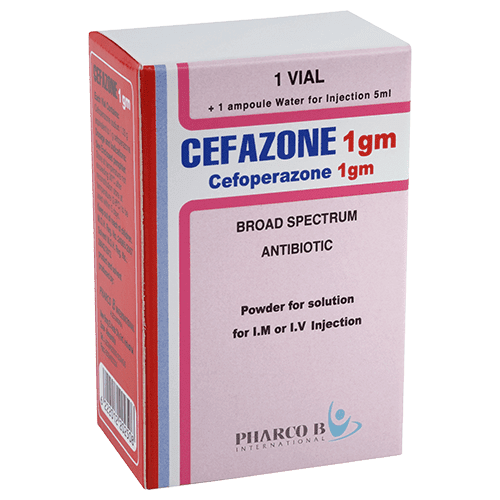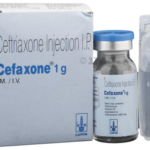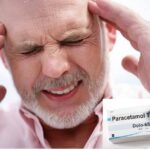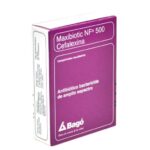Cefazone Injection: Uses, Dosage, Side Effects, Interactions

Cefazone is a brand of cefoperazone manufactured by Pharco B Pharmaceuticals. Cefazone is used to treat the symptoms of various bacterial infections. Cefazone may be used alone or with other medications. Cefoperazone belongs to a class of drugs called Third Generation Cephalosporins.
Cefazone is one of few cephalosporin antibiotics effective in treating Pseudomonas bacterial infections which are otherwise resistant to these antibiotics. This antibiotic also has a broad spectrum of antimicrobial action, including most clinically significant microorganisms: Gram-positive, Gram-negative, aerobic, and anaerobic. It is stable with respect to most beta-lactamases of Gram-positive and Gram-negative bacteria.
Cefazone is used for bacterial infections of the lower respiratory tract, urinary and sexual tracts, bones, joints, skin, soft tissues, abdominal, and gynecological infections.
The active ingredient in this drug was patented in 1974 and approved for medical use in 1981. Cefoperazone/sulbactam (Cefazone S) is a co-formulation with sulbactam 1gm/500mg.
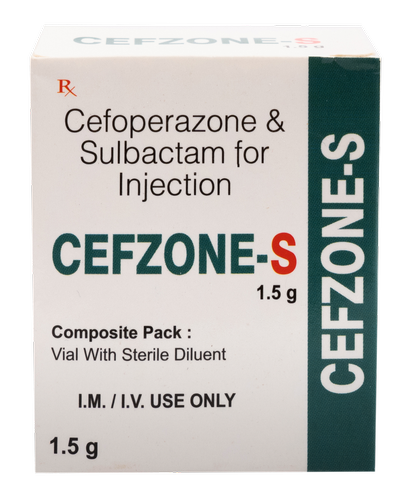
How Should Cefazone be used?
The usual adult daily dose of Cefazone (sterile cefoperazone) is 2 to 4 grams per day administered in equally divided doses every 12 hours.
In severe infections or infections caused by less sensitive organisms, the total daily dose and/or frequency may be increased. Patients have been successfully treated with a total daily dosage of 6–12 grams divided into 2, 3, or 4 administrations ranging from 1.5 to 4 grams per dose.
When treating infections caused by Streptococcus pyogenes, therapy should be continued for at least 10 days.
If C. trachomatis is a suspected pathogen, appropriate anti-chlamydial coverage should be added, because cefoperazone has no activity against this organism.
What are the possible side effects of Cefazone?
Cefazone may cause serious side effects including:
• hives,
• difficulty breathing,
• swelling of your face, lips, tongue, or throat,
• joint pain,
• blood in urine,
• internal bleeding
• low platelet level,
• easy bruising,
• bleeding that will not stop,
• severe dizziness,
• yellowing of the skin or eyes (jaundice),
• abdominal pain and swelling,
• blistering and peeling of the skin,
• red or purplish skin rash that spreads,
• flu-like symptoms,
• redness of the skin,
• scaling or crusting of the skin,
• itching,
• swollen lymph nodes,
• fever, and
• feeling unwell
Get medical help right away, if you have any of the symptoms listed above.
The most common side effects of Cefazone include:
• diarrhea,
• nausea,
• vomiting,
• pain, swelling, or redness at the injection site, and
• reversible low white blood cell count (neutropenia)
Tell the doctor if you have any side effect that bothers you or that does not go away. These are not all the possible side effects of Cefazone. For more information, ask your doctor or pharmacist.
Does Cefazone interact with other Medications?
Cefazone can interact with the following medications:
- Antimicrobials
- Live typhoid vaccine
- Selected cephalosporins
- Ethyl alcohol
- Anticoagulants (vit k antagonists)
- Moderate Interactions
These medications may cause some risk when taken together. Consult your healthcare professional (e.g., doctor or pharmacist) for more information.
This list may not describe all possible interactions. Give your health care provider a list of all the medicines, herbs, non-prescription drugs, or dietary supplements you use. Also tell them if you smoke, drink alcohol, or use illegal drugs. Some items may interact with your medicine.

